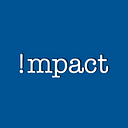Although the concepts of Agile Internal Audit (Agile IA), which emphasize fluidity over formality, are simple; putting them into action has been more difficult than some IA functions have anticipated.
“The decentralization of decision-making is key to Agile IA, and it can be a difficult switch to make,” says Sandy Pundmann, a U.S. managing partner, Internal Audit, with Deloitte Risk and Financial Advisory, Deloitte & Touche LLP.
“Because internal audit groups vary widely in their capabilities, resources, and readiness for change, the successful adoption of Agile IA depends heavily on leadership within the function, the audit committee, and senior executives: It is truly a change management concern,” she notes.
A Flexible Approach
Agile IA is a flexible methodology for adapting Agile to the specific needs of an internal audit function and its stakeholders. Originally a software-development methodology, Agile aims to reduce costs and time to delivery while improving quality. Specific characteristics of the Agile methodology include delivering tested products in short iterations and involving internal customers during each iteration to refine requirements.
Agile IA has many potential benefits, but implementing it calls for shifts in the function’s approach, such as that from rigidly planned activities to fast, iterative activities, and from following a preset plan to responding to emerging needs
Sandy Pundmann
Read here the original article:
